Status Update: October 2024
RPGs
Old-School Essentials
For the first time in probably half a decade, I have news on this front!
Thanks to some work colleagues, we have just begun playing Old-School Essentials, a reinvention of the original Dungeons & Dragons rules, brought from the dead to take dungeon crawling adventures back to the old days of storytelling and exploration, instead of all being so driven by rules, and tiles (and miniatures).
It is called "0ed" and, while I have only read the basic free rules so far, I can clearly see why. They try very strongly replicate the old first edition of D&D/DnD, making everything quite simple and approachable to insist and focus a lot on the "this is an adventure, improvise!" take.
But damn, it is also very challenging! Level 1 characters are so fragile; my lawful cleric almost died on our first encounter... And I don't even have any spells other than "turn undead"!
But what I'm most happy about is the fact that after so long, I'm back into some roleplaying. We're doing it online, so it is a new and different experience, but I'd rather meet virtually than not meet at all!
Videogames - Finished
XCom: Enemy Unknown
I got a brand new iPad, and when I saw that the game is available there (expansion included), couldn't resist. I finished a full ironman mode walkthrough, with many augmented soldiers but no MEC.
Videogames - Ongoing
Zelda(s)
I decided to do another run of both Breath of the Wild, and then Tears of the Kingdom, and I began, but Echoes of Wisdom just came out! So it really should be in the postponed section, but as I switched a Zelda game with another Zelda game, it's kind of even.
Dwarf Fortress
Really not advanced much, the game is as good as deep and complex, so I have it kind of on hold until I have enough time to properly immerse on its mechanics. Still, by far the best and most complete game of its kind.
KeeperRL
I decided to buy this roguelite mix of Dwarf Fortress and Dungeon Keeper, and so far so good. While not as deep as DF, it is also much easier to begin playing, and I like the dual real-time-for-building and turn-based-for-fighting approach.
I must confess that the Dwarf Fortress-like graphics and building/crafting were what sold me in the first place. It is also quite cool that it features multiple game mode variants: being a knight, an adventurer, a dungeon keeper but themed to a necromancer... Looks like highly replayable.
Ancient Domains of Mystery
I'm slowly trying to play more old-school kind of roguelites, but the user interfaces are often really complex. I don't mind the ASCII graphics, but relying more on keyboard shortcuts than on menus requires some investment. ADOM provides a nice graphical UI and mouse support over (most of) its game, and has very good critics, so I also began playing it.
So far I merely finished the tutorial and some initial quests, but looks very promising.
XCom 2
After playing again the first one, I am eager for more turn-based stragegy, so I just began a new game. Of course in ironman mode, I love the thrill of not being able to go back after any mistake or bad luck.
Videogames - Postponed / Discarded
Diablo 4
I got my necromancer to level 100, played a bit more, but got tired. The expansion just came out, but they redesigned the crafting and levelling for the 4th or 5th time, so I'm going to pass for now. When they make up their minds and stop to properly think what and how they want the game progression to be, then I'll consider coming back.
Also, the expansion is way overpriced for the small chunk of new stuff it brings, so I'll wait for some sale if I decide to play the game again.
Diablo 2: Resurrected
After dismissing Diablo 4, I wanted more, so switched to D2R. I got my necromancer there to level 73, just after unlocking the Hell difficulty level. But I need to grind quite a bit for better equipment and runes, as even the starting enemies are such a challenge.
Parked the game for now, but I'll probably come back in the future.
Oxygen Not Included
While not an RPG per-se, it is one of those base-building games in which the characters and the world feels so alive that I'm treating it almost as if it were one. An adventure of a group of interstellar travellers that got stuck in an alien planet, and now struggle to build a habitable underground base? station? city maybe?
I think I am in the middle stages of the game, where you can sustain your colony almost without issues, and I have plenty of resources and they deplete slowly; I can recycle water, I generate some food, and I generate some oxygen and recycle/clean more. It is never a long-term sustainable scenario, but I'm happy to have learned the ropes of the game without having to sacrifice any colony and start over again.
Let's see if I manage to finish it (I think you can build a rocket and fly away from the planet).
Book review: Art & Arcana: A Visual History (Dungeons & Dragons)
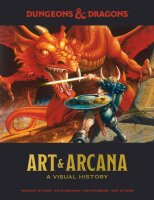
Book: Art & Arcana: A Visual History (Dungeons & Dragons)
August has been for me the Dungeons & Dragons themed month. After the Lore & Legends book, I picked another history lesson book: Art & Arcana. As the title hints, the main topic is about how D&D art and style has changed during on each edition; From the original, black and white and a bit amateurish drawings, to the astounding coloured depictions of adventures, adventurers, and monsters of the later editions.
One thing that stands out when you read the book, is that there is a lot of information. It is not a mere visual journey, and even focusing only on the textual content, I feel the quality and depth of it to be superior to Lore & Legends. There are so many interesting stories and details of the evolution of TSR, its illustrators, the art direction... I went for it because of the drawings, but it was a pleasant surprise to find so much content.
The illustrations are spectacular and, of course, the main focus. Being able to see all five evolutions of many creatures, book covers, the TSR logo itself, even some maps! Going from clearly hand-drawn irregular maps to the ultra-detailed and dense most recent iterations is such a joy. Learning the fun source of quite a few monsters (spoiler: plastic children toys), and then watching how they evolved into more serious and colourful depictions, is also very cool.
I've always been drawn into D&D because of its amazing book covers and incredible drawings, and this book contains the reason why. Moreover, In my case I began with the 2nd edition and its more professional but still mostly mono-color images, so experiencing how much everything has evolved, and expanded, and matured, was very fascinating.
A remarkable reference book.
Comic Book review: Dune: The Graphic Novel book 3
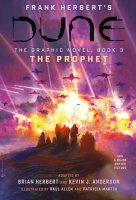
Book: Dune: The Graphic Novel Book 3
This will be a brief review. I just picked up the third and last book, and the same that I mentioned for the two previous titles apply to this one too. Visual style from David Lynch's film, close book adaptation, and still not fully my liking of the drawing. But I think this volume does a better use of color, or at least it felt nice in that regard.
I would rather not spoil anything, but plenty of things happen, so if you're new to the Dune lore, you're in for an action-packed ride.
At least no surprises, which is good if you're searching for continuity. If you enjoyed the past volumes, you'll like this one.
Book review: Lore & Legends (Dungeons & Dragons)
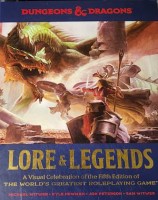
While I Began my journey into RPGs with Lord of the Rings (Middle-earth Role Playing 2nd edition, to be more precise), its rules were far too complex and full of tables for a child. Then, one day my father came back from a trip to the USA, and brought me the Dungeons & Dragons 1991 boardgame, and that changed everything: With easy to learn rules, it provided a smooth introduction to the world of Dungeons & Dragons, opening my appetite of more; 2nd edition DM and Player books, and the Monster Compendium came after. But I would end disconnecting from the role-playing game after the 3rd edition, playing a lot of D&D-based videogames but not a single RPG session. And, since then, I have not played again (for various reasons). During (and after) the pandemic, I tried to convince my friends to play something online, to try some VTT (Virtual Table-Top) systems with any fantasy system (D&D or not), but to no avail.
And now, fast-forward to 2024, me visiting a local store, and finding the Lore & Legends book: A huge +400 pages book, full of images and drawings, indeed celebrating the 5th edition, but doing so by going back to the roots of the game: Each book, adventure module, setting/universe mentioned, explained from the first incarnation to the latest edition version. With abundant drawings, limited editions and associated merchandise (collectibles, miniatures, ...), I had a great time reading about the journey of the game. And I learned a lot, from the origins of the Dark Sun setting (influenced by Mad Max movies), to my surprise that the iconic Ravenloft module was created in the early 80s, it is full of details and gorgeous full-page pictures.
Regarding the pictures, not only we see some of the old ones, but I think that all the 5th edition books/modules detailed contain uncropped/"expanded" versions of the cover images, which is spectacular as at times, there is a significant portion of the drawing that you don't see in the cover.
While the text contents are of course interesting, what really got me spending "extra" time when reading were the images... I had forgotten how detailed and incredible they are. And this brings me to the less good part: For a book that goes through visual history, at times it feels doing less justice than it should: An overabundance of pictures from famous real-world folks, YouTubers, and celebrities; Many pictures of the WizKids not-really-great plastic miniatures (their painting being from average to, very often, mediocre); And a lot of emphasis on the latest digital era, with live role-playing sessions via streaming, YouTube, Twitch, and the like. It is good to know, but I'd rather have more images from the book contents, or more cool drawings, instead of the 6th photo of some celebrity during his module-related precisely timed campaign game session.
Don't get me wrong, it is still a great title, and feels to me as a D&D equivalent of a history book. It so happens that I got my hands on another title Dungeons & Dragons: Art & Arcana: A Visual History, and despite being more focused (theoretically) on the art, this second book contains at times a deeper and more interesting history, which makes me feel that Lore & Legends should have been more ambitious and content-rich.
Comic Book review: The Strain
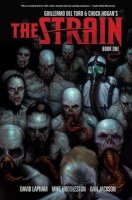
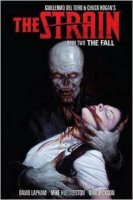
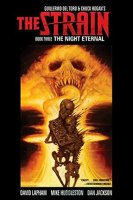
Comic Book: The Strain, The Strain: The Fall & The Strain: The Night Eternal
I very much enjoyed the first season of The Strain TV series: A fresh and less common take on vampires, with a great initial suspense and events unrolling. But then, the remaining seasons went a bit sideways, feeling almost boring at times, and leaving me not too satisfied with what looked as a promising script from Guillermo del Toro.
I know that, based on the initial TV script rejection, there are some books, but I haven't read them. But when I found that there are also comics, based on the books (not on the TV series), I had to read them. Spoiler alert: I am happy that I did.
I will review comparing the comics with the TV adaptation. The three comic books correspond to the three textbooks, meanwhile the TV series had 4 seasons, partially because they expanded some characters, invented others, and modified a non-trivial amount of content. At times, the comic felt advancing quite fast, maybe too much if it's your first landing on The Strain. A few characters are given much less attention, but the comics are darker, crueller, and less optimistic. It's difficult to avoid spoilers, so I'll just say that it surprised me a few times, even knowing the basic story (or at least, the adapted story).
The drawings are excellent, colourful, gory, and explicit. There is abundant text (entire chunks must come from the books because as far as I can remember, the TV series say them too almost the same), and the pacing is very rapid; There's almost always something happening, if not multiple things in different places at once.
A highly recommended comic compilation.
Previous entries